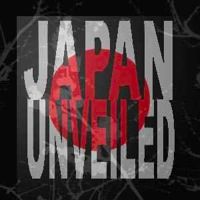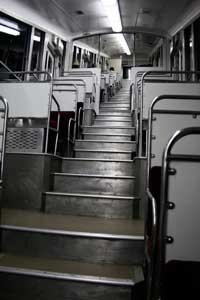





 Koyasan, or Koya mountain, is located south of Osaka, on the Kii peninsula (Kii-hanto). It holds the village of Koya, and is most known as the center of the Shingon sect of Japanese Buddhism. Koya was founded in 819 by the monk Kukai. Now, Koya has about 7000 inhabitants, and many of them are buddist monks, with about 120 temple. It has several nice attractions: Okunoin the mausoleum of Kukai, which is surrounded by an graveyard (the largest in Japan), Konpon Daito, a pagoda that represents the central point of a mandala covering all of Japan in Shingon doctrine, and Kongobu-ji the headquarters of the Shingon sect. But perhaps the mayor attraction in the possiblity to sleep in a buddist temple, and participate in the monring prayers of the Shingon monks.
Koyasan, or Koya mountain, is located south of Osaka, on the Kii peninsula (Kii-hanto). It holds the village of Koya, and is most known as the center of the Shingon sect of Japanese Buddhism. Koya was founded in 819 by the monk Kukai. Now, Koya has about 7000 inhabitants, and many of them are buddist monks, with about 120 temple. It has several nice attractions: Okunoin the mausoleum of Kukai, which is surrounded by an graveyard (the largest in Japan), Konpon Daito, a pagoda that represents the central point of a mandala covering all of Japan in Shingon doctrine, and Kongobu-ji the headquarters of the Shingon sect. But perhaps the mayor attraction in the possiblity to sleep in a buddist temple, and participate in the monring prayers of the Shingon monks.
After a whole day in Nara we decided we could still go the Koyasan. Although not very far from Nara, it was still about a 3.5 hour trip. First 3. hours to Gokurakubashi, a small town a the foot of the mountain. The train to this town travels through very nice valley, however, it was already getting dark when we traveled through the area, and we did not see much. After this train trip, it is a 5-minute cable car drive, on a 45 degrees slope.
It was late, and the sun had set. Although the Koya village is only a mile away from the cabel car station, it is not allowed to walk along the road. We were one of the few that took the last bus to Koya.


When we indicated to the bus driver that we wanted to find a temple to sleep (in Koyasan you can have the unique experience of spending the night, not in a hotel, but in a temple). The driver was shocked, and said that most places were closed. Indeed, when we later read the Lonely Planet it was written that Koyasan is often bussy, and bookings need to be made when in tourist season.
The bus driver dropped us at the police station. The officer on duty did not speak english, and we did not speak Japanese. But with some sign language we were able to tell him that we wanted to take a temple lodging (shukubo). The police was shocked as well, that we arrived this late, without even booking something. He started calling some people. The only thing we understood was that he was searching a place for us to sleep, and that he thought we were Americans.
Luckily, the police found a temple for us to sleep. We could walk to the temple. Upon arriving, we took off our shoes, and we were guided to our room. The room was neat, and simple. When we wanted to make the bed, four monks rushed in, and put our beds together on the tatami mats.
Next morning we woke up around 5 o'clock to be able to participate in the morning prayers (o-inori). It was a nearly hypnotic experience, with gongs struck and prayers sung, and hummed. It is a very nice way to find out what is going on the buddist temples for the inhabitants.
After the o-inori, we had breakfast, after which we went out to visit the many attractions of Koyosan. First we took the bus to Okunoin, the enormous graveyard, around the mausoleum of Kuka. Okunoin is the largest graveyard of Japan, and it is full of different, and some strange gravestones. Since it is the center of Buddism, many people with even the slightest inclination for buddhism want to have at least a lock of hair interred here. This explains why it is so big.


A stroll over the cemetary is a rather nice experience. The paths are cobbled, and large cypresses line the walkways. On the north side of the cemetery one can find the Toro-do, or Lantern Hall. The Toro-do houses thousands of lanterns, which are offerings or donations, some are thought to have been burning for over 900 years. The hall itself dates from 1023.
Behind the Torodo lies the Gobyo (御廟), the Mausoleum of Kobo Daishi (called Kukai during his life). Tourist, the residents of Koyasan, and followers of Shingon Buddhism come here to honor Kobo Daishi. Kobo Daishi established the Shingon Buddhism sect, after he traveled in 804 to Xi'an (the Chinese capital at the time). He is believed not to have died but to be in a state of eternal meditation.
Next up was the Kongobu-ji, the head quarters of the Shingon school. The abbott of Koyasan is also living here. It is a big dark building, with many old masterly painted screens. You really get the impression of walking through a place with history. There is a Willow room, with screen of painted willows, which is the place where Toyotomi Hidetsugu committed seppuku (hara-kiri), after he was order to do so when he was accused of plotting a coup. Afterwards we walked through the kitchen and had a look at the Kongobu-ji rock garden. We ended the tour with a complimentary tea and rice cake.


We then walked to the Sacred Precinct (Garan). This is a temple complex with several halls and pagodas (200 yen to enter each). We entered the site from the east, and the first thing we saw was the enormous red pagoda, the Dai-to (or Great Pagoda). To give an impression of how big it is: on the picture above, you see the Dai-To, and in the bottom of the picture, on the stairs, you see a tiny me. The Dai-to houses the Dainichi-nyorai (Cosmic Buddha) and four other buddhas. There is also a main hall (Kondo) and another pagoda (Sai-to). Both of these buildings are less extravert, but still very interesting to see.
After visiting the Garan, we had to rush to the temple where we slept to pack our stuff and go to Kyoto. We arrived a bit on the late side, and one of the monks was very nice and drove us to the Koyasan station, such that we could still be in Kyoto before night-fall. To us that was important, because we had not booked a hotel in Kyoto yet.
